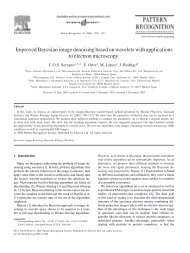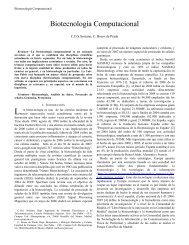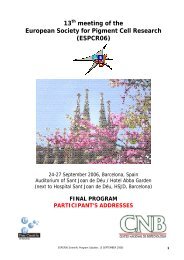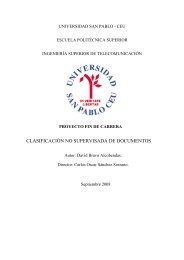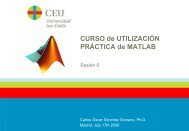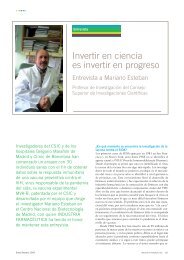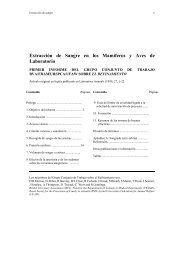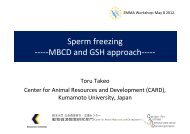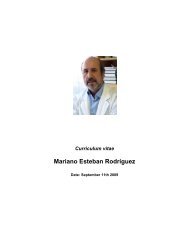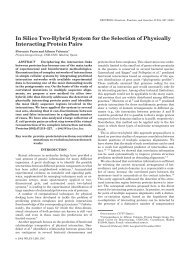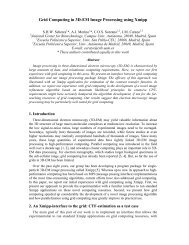XMIPP introductory demo
XMIPP introductory demo
XMIPP introductory demo
Create successful ePaper yourself
Turn your PDF publications into a flip-book with our unique Google optimized e-Paper software.
1. The protocol extracts the particles from the micrographs using the coordinates determinedin the previous step. You must indicate the name of the coordinate family (by defaultCommon) and the image dimension in pixels (in this case 80).2. The particles are normalized to have zero mean and a standard deviation of unity for thebackground pixels. You must define the background pixels as those outside a circle ofgiven radius (35 pixels in this case). Ramping background correction, black dust removaland white dust removal are optional flags to correct for ramping backgrounds and/or whiteor black outlier pixels (possibly dust particles).3. Finally, the protocol corrects the CTF-phase of your particles and/or sorts them based ongeneral statistics to identify outliers. For our example we do not perform these two finalsteps because they are not adequate for tilted images.Press the Analyse Results button to check the extracted and normalized images (see Fig.11). Play a little with the pop-up windows (right-click on the window to pop them). In particulartry Options->View Average and SD images. NOTE: before obtaining an averageimage you will need to select a set of images that you want to average (click on the desiredimages and press the space bar or double-click them with the left mouse button).This protocol has created a directory called Images/ in the projectdir, which contains all theextracted images sorted by micrographs. You can see that for each micrograph a sub-directoryhas been created by typing:cd ..ls -l Images/And you can see all individual particle files by typing:ls -l Images/*/*The protocol has also created two new selfiles in the projectdir (all_images_untilted.seland all_images_tilted.sel), which contain all the untilted and tilted images correspondingly.2.5 A much larger data setNow, we want to combine the information contained in all our (very noisy) particles to createan average image with high signal to noise ratio. However, we only can combine images thatare similar. That is, particles that represent different projection directions or that are projectionsfrom different 3D objects must be separated from each other before averaging. In order to solvethis problem, several 2D-classification tools have been developed in Xmipp. The most popularones are both based on maximum-likelihood principles and are called xmipp_kerdensomand xmipp_ml_align2d.Two micrographs do not provide enough particles for reliable classification and alignment.Therefore, we have previously executed the Preprocess Micrographs, Manual Particle18




